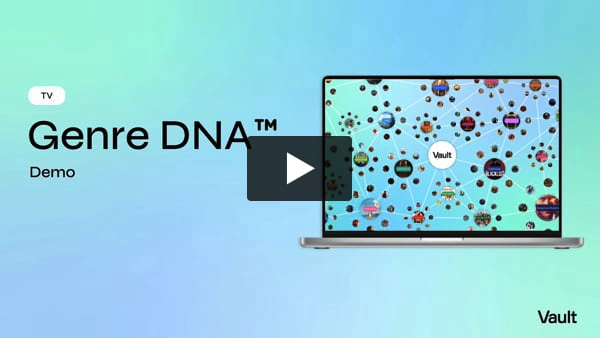Rapid Insights: The Pitt Redefines Medical Drama with Real-Time Intensity

Max recently premiered an intense, hyperrealistic new medical drama that has quickly become a massive hit, landing in the streamer’s top five most-watched original series premieres ever. Starring Noah Wyle as a senior attending physician overseeing a team of doctors in an underfunded Pittsburgh ER, the show takes place in real time, with each of its 15 episodes representing one hour in a single tumultuous 15-hour shift.
Here’s what you need to know about The Pitt:
Vault uses index scores to describe the impact a given story/theme/element will have on specific KPIs:
≤79 Disappointing 80-89 Challenging 90-109 Average 110-119 Promising 120+ Outstanding
Who’s been tuning in to this exciting new show?
Thanks to its streaming-only origins, The Pitt carries a slightly different viewership profile than its linear-based brethren. While this series does lean to women (58%) and those 30+ (75%), other medical dramas–largely the domain of the broadcast networks–show a much more pronounced audience skew, with titles like Grey’s Anatomy, The Good Doctor, Doc, Brilliant Minds, The Resident, Chicago Med, Code Black, and New Amsterdam all landing at 65-69% women and 90-94% aged 35+.
Why have viewers been watching?
For the intense realism. The Pitt’s central conceit–a real-time look at a single shift in a chaotic ER–is what sets this drama apart, and audiences are lining up to watch the show’s doctors work together (Teamwork, 120) to make Tough Decisions (121) in an extremely high-stress and Difficult Workplace (132). With the characters battling understaffing and limited resources in their fight to save lives (Overcoming Adversity, 130), many real-life healthcare workers are even touting The Pitt’s spot-on accuracy to their own professional experiences.
What type of emotional experience is drawing in audiences?
The rawness of life-or-death. The show’s ratings are being driven by a wide range of rich, intense, opposing emotions, from Contempt (132) to Admiration (126), Optimism (126) to Disapproval (132), Awe (120) to Anger (120), and Aggressiveness (120) to Submission (117). This emotional roller coaster parallels the highs and lows of The Pitt’s fast-paced, do-or-die stakes and will keep viewers glued to their seats and wanting more.
How does the show’s social buzz look?
Encouraging. Online chatter spiked immediately with the release of the first two episodes and then jumped again with episode three, peaking at an “outstanding” level (131) as more and more people latched onto the show. As is typical of weekly roll-outs, its buzz has been cooling slightly in the days between new episodes, but even then it still hovers in the “promising” range (at 116), indicating a fairly robust and ongoing online conversation.
What will help propel The Pitt into a second season?
The tried-and-true Medical Drama (123) formula. While viewers are tuning in for the show’s intensely unique take on its genre, it’s actually the themes, characters, and cases that The Pitt has in common with other hospital-set series that will keep its story churning for the long haul. The Medical Professionals (160), Doctor-Patient Relationships (124), Medical Procedures (122), and patient Lives in Danger (113) are its top longevity drivers, in the same way that similar elements assured long runs for shows like Grey’s Anatomy and The Good Doctor. This genre is so rich in built-in stakes and an endless flow of new story opportunities that its basic building blocks are enough to keep viewers hooked.
Most Popular Rapid Insights:
Redefine your understanding of TV subgenres
Introducing Genre DNA™ – TV subgenres redefined by groundbreaking AI analysis to reveal the true drivers of viewership.
See the insights that others can’t
Genre DNA™ goes beyond traditional TV genre classifications by analyzing over 1,000 scripted and unscripted series on both linear and SVOD platforms from the last 5 years.
Each Vault Genre DNA™ report offers a precise analysis of your chosen TV subgenre, uncovering its unique drivers of viewership.
*Publicly released trailers for series are evaluated using Vault’s algorithms – utilizing our proprietary 120K+ story element database alongside viewership performance and other datasets – to identify unique combinations of stories, themes, characters, and genre elements that will drive success.
